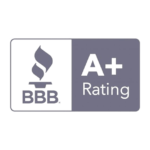University tours are important for attracting prospective students and convincing them to choose your college over others. A large number of students have also claimed that they rate campus tours very highly when deciding which college to get admission into. However, it’s not possible for every student to get a tour of their dream college, especially if they don’t live near that college. With enrollment in colleges and higher education institutions declining gradually, universities need to make college tours accessible to more students. One effective method of providing a glimpse of campus life to several students is through virtual college tours. These immersive experiences allow individuals to explore a university’s facilities, interact with campus environments, and gain valuable insights without physically being present. This article highlights the benefits of using high-quality virtual tour production services and why universities should consider investing in them.
What are Virtual Tours?
Virtual tours are interactive multimedia presentations that simulate a physical visit to a location using advanced technologies. Through the use of 360-degree panoramic images, videos, audios, and additional interactive elements, virtual tours provide an engaging and realistic experience that closely resembles an actual on-site visit. Users can navigate through various areas of interest, such as classrooms, libraries, dormitories, recreational facilities, and more, all from the comfort of their own devices.
Benefits of Using Virtual College Tours for Universities
- Expanded Reach: Virtual tours eliminate geographical barriers and enable universities to reach a global audience of prospective students. They can attract and engage individuals who may not have the means or opportunity to visit the campus in person, thereby expanding the recruitment pool.
- Enhanced Engagement: High-quality virtual tours offer an immersive experience that captures the attention of prospective students. The interactive nature of these tours allows users to explore different areas of the campus at their own pace, interact with multimedia content, and gather relevant information, resulting in increased engagement and interest.
- Time and Cost Efficiency: University virtual tour production services save both time and resources for universities and prospective students alike. Instead of organizing multiple physical tours, universities can develop virtual tours that are accessible 24/7. This convenience allows students to explore campuses on their own schedule, reducing the need for repetitive information sessions and lowering travel expenses.
- Personalized Experience: Virtual tours can be customized to cater to the unique interests and preferences of prospective students. By incorporating interactive elements such as campus maps, pop-up information boxes, and embedded videos, universities can deliver a tailored experience that highlights specific programs, facilities, and campus culture, ultimately influencing the decision-making process.
Also Read: Virtual Tours vs. Video Tours: Exploring the Future of College Campus Exploration
Technologies Needed for Excellent College Virtual Tours
Professional 360-Degree Cameras
High-resolution 360-degree cameras are essential for capturing the immersive visuals required for a high-quality virtual tour. These cameras enable the creation of panoramic images that allow users to explore every corner of the campus. Investing in professional-grade cameras ensures crisp, detailed visuals that accurately represent the campus environment.
Virtual Reality (VR) Integration
Virtual tours can be taken to the next level by integrating virtual reality technology. VR headsets offer users a fully immersive experience, allowing them to feel as if they are physically present on campus. By investing in VR integration, universities can create a more interactive and engaging virtual tour that heightens the sense of immersion and realism.
Interactive Elements
To enhance user engagement, virtual tours should incorporate interactive elements. These can include embedded videos, audio guides, clickable hotspots, and pop-up information boxes. Videos can provide additional insights about specific programs or showcase campus events, while audio guides can offer narrations that guide users through different locations. Clickable hotspots and pop-up information boxes can provide detailed information about specific buildings, facilities, or points of interest. Incorporating such interactive elements enriches the virtual tour experience and allows users to gather more information at their own pace.
Mobile Compatibility
It is crucial to ensure that virtual tours are compatible with mobile devices. Most users access the internet and view content on their smartphones and tablets. Therefore, optimizing virtual tours for mobile compatibility ensures that prospective students can access and enjoy the virtual tour experience seamlessly on their preferred devices. This expands the reach of the virtual tour and increases overall accessibility.
User-Friendly Navigation
A well-designed navigation system is essential for a seamless virtual tour experience. Users should be able to intuitively navigate through different locations, switch between buildings or areas of interest, and easily move between different sections of the virtual tour. Providing a user-friendly interface and navigation controls ensures that users can explore the campus effortlessly, enhancing their overall experience.
Content Management System (CMS)
A robust CMS is necessary for managing and updating the virtual tour content. Universities should invest in a CMS that allows them to easily add or modify information, upload new images or videos, and make necessary updates to reflect any changes or improvements made to the campus. This ensures that the virtual tour remains current and provides accurate and up-to-date information to prospective students.
Accessibility Features
To make virtual university tours inclusive, consider incorporating accessibility features. These can include features such as closed captions for videos, alternative text descriptions for images, and compatibility with screen readers. By ensuring that virtual tours are accessible to individuals with disabilities, universities can also demonstrate their commitment to diversity and inclusion.
Why Universities Should Invest in High-Quality Virtual Tour Production Services
Enhanced Brand Image and Reputation
Investing in high-quality virtual tour production services demonstrates a commitment to innovation and modernity. It showcases the university’s willingness to embrace technology to provide the best possible experience for prospective students. By presenting a visually appealing and interactive virtual tour, universities can enhance their brand image and reputation, positioning themselves as forward-thinking institutions.
Increased Conversion Rates
Virtual tours have been proven to significantly impact conversion rates, leading to more applications and enrollments. Research shows that students who engage with virtual tours are more likely to apply and ultimately choose the university for their higher education. Investing in high-quality virtual tour production services increases the chances of capturing the interest and attention of prospective students, encouraging them to take the next steps in the enrollment process.
Cost-Effective Marketing Tool
Traditional marketing methods, such as print materials, brochures, and physical campus tours, can be costly and time-consuming to produce and distribute. In contrast, virtual tours provide a cost-effective marketing tool that can be easily shared across multiple platforms, including websites, social media, and email campaigns. They allow universities to reach a wider audience with minimal additional expenses, making them a cost-effective solution for student recruitment efforts.
Adaptability to Changing Circumstances
The COVID-19 pandemic highlighted the importance of having virtual alternatives for campus tours. Even as the situation improves, the demand for virtual experiences remains high. Investing in high-quality virtual tour production services equips universities with the ability to adapt to changing circumstances and cater to the preferences of prospective students, whether they are located far away, have mobility constraints, or simply prefer the convenience of a virtual visit.
Analytics and Data Insights
High-quality virtual tour production services often provide analytics and data insights that can help universities understand user behavior and preferences. By analyzing metrics such as tour completion rates, click-through rates, and engagement levels, universities can gain valuable insights into what aspects of their campus and programs resonate most with prospective students. This data-driven approach enables universities to make informed decisions and optimize their marketing strategies.
Alumni Engagement and Fundraising
Virtual tours are not limited to prospective students. They can also be utilized to engage alumni and donors. Alumni can revisit their alma mater virtually, reminiscing about their experiences and rekindling their connection with the university. Furthermore, virtual tours can be shared with potential donors, providing them with an immersive and interactive experience that highlights the impact of their contributions. This can help foster stronger relationships and drive fundraising efforts.
Also Read: Effective Tips for Your College to Recruit Gen Z Students
Conclusion
As universities strive to adapt to the evolving needs of prospective students, investing in high-quality virtual tour production services has become crucial. University virtual tours offer an immersive and engaging experience that expands the reach of universities, increases engagement, saves time and resources, and provides a competitive advantage. By leveraging the best virtual tour production services and partnering with experienced virtual tour service providers like Mass Interact, universities can create captivating experiences that leave a lasting impression on prospective students, ultimately driving enrollment and fostering a strong campus community.






















